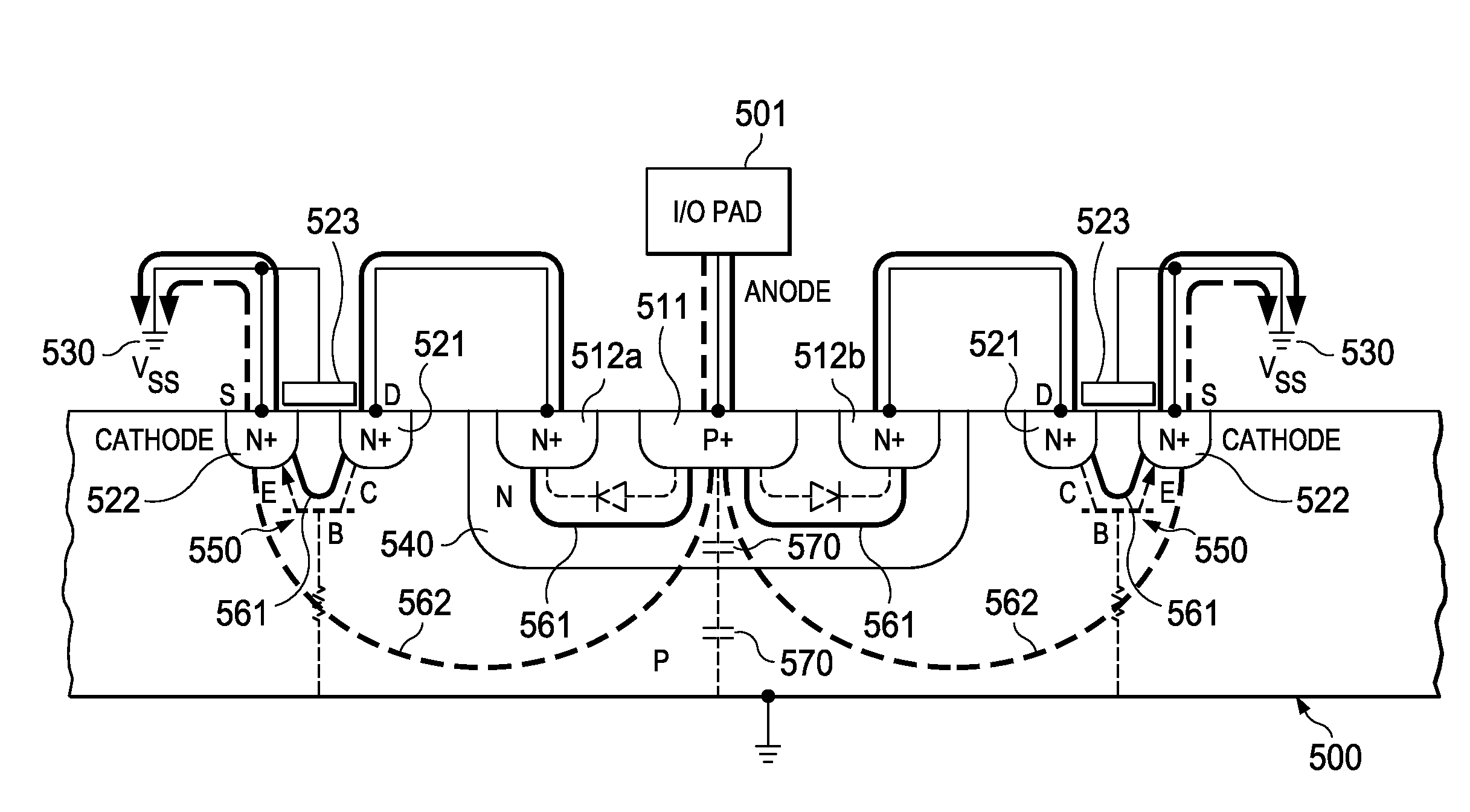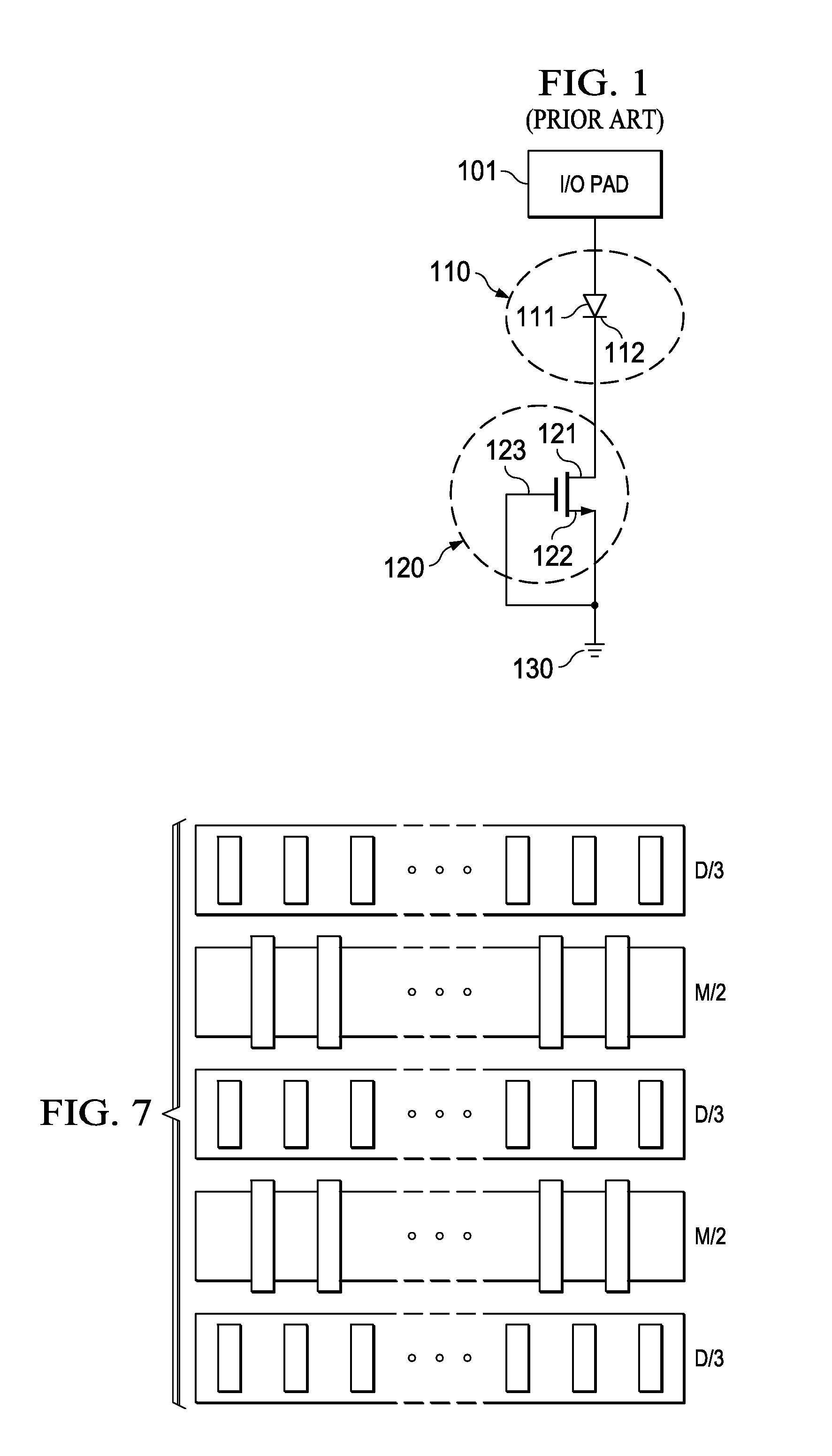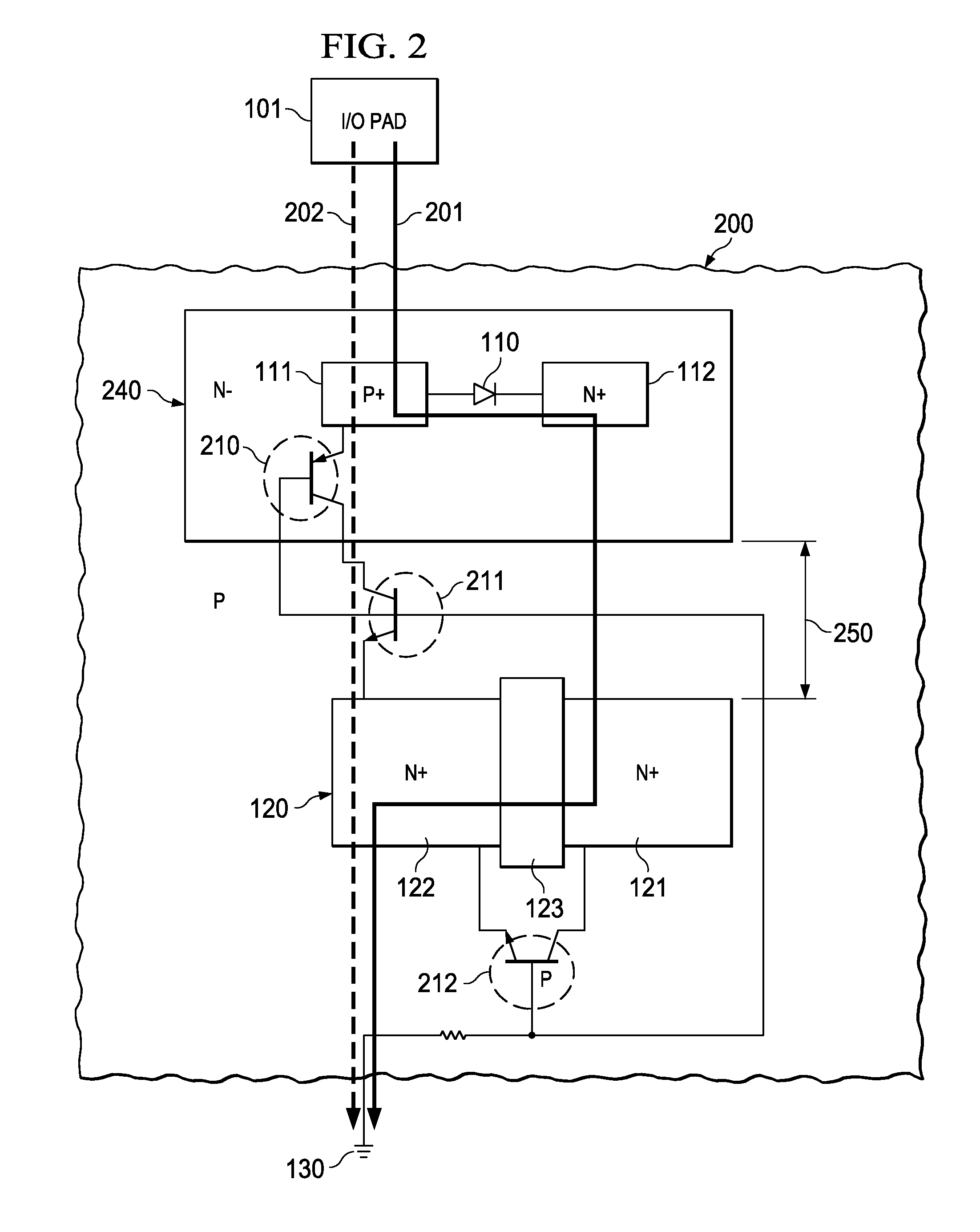Electrostatic discharge protection having multiply segmented diodes in proximity to transistor
a diode and electrostatic discharge technology, applied in the direction of emergency protective circuit arrangement, transistor, etc., can solve the problems of insufficient substrate pump effect, inability to rely on protection devices to achieve uniform trigger, and inability to achieve uniform trigger
- Summary
- Abstract
- Description
- Claims
- Application Information
AI Technical Summary
Benefits of technology
Problems solved by technology
Method used
Image
Examples
Embodiment Construction
[0023]FIG. 1 shows the block diagram of the concept referred to as the diode isolated grounded-gate MOS concept for protecting fail-safe, RF, wireless, and other advanced ICs in a semiconductor device against ESD events. The input / output (I / O) pad 101 to be protected is in series with the forward biased diode 110 and MOS transistor 120 to ground potential 130. Pad 101 is connected with the anode 111 of diode 110; the cathode 112 of the diode is tied to the drain 121 of MOS transistor 120.
[0024]The integrated circuit (I / C) and the device for ESD protection are fabricated in a semiconductor substrate. The term “substrate” refers herein to the starting semiconductor wafer, which, in present manufacturing, typically has p-type doping. For clarity, this case is also selected as the basis for the following discussions. For many applications, the first conductivity type referenced above is p-type and the opposite conductivity type is n-type. With this selection, the semiconductor substrate...
PUM
 Login to View More
Login to View More Abstract
Description
Claims
Application Information
 Login to View More
Login to View More - R&D
- Intellectual Property
- Life Sciences
- Materials
- Tech Scout
- Unparalleled Data Quality
- Higher Quality Content
- 60% Fewer Hallucinations
Browse by: Latest US Patents, China's latest patents, Technical Efficacy Thesaurus, Application Domain, Technology Topic, Popular Technical Reports.
© 2025 PatSnap. All rights reserved.Legal|Privacy policy|Modern Slavery Act Transparency Statement|Sitemap|About US| Contact US: help@patsnap.com



